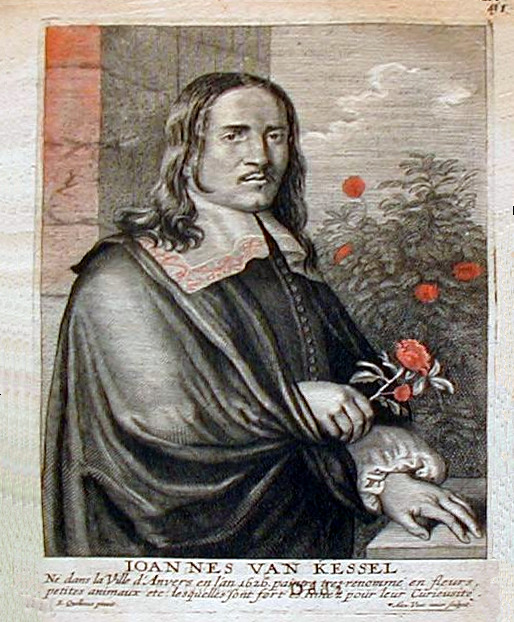Jan van Kessel (I)
1626–1679
PainterJan van Kessel was born in April 5th, 1626 to Hieronymus van Kessel and Paschasia Brueghel. His father was an accomplished animal painter and a member of the St. Luke’s Guild, which gave his son early exposure to the art world. However, it was through his mother’s family that van Kessel had access to the full range of European artistic methods and training. She belonged to the Brueghel family of artists and was the grand-daughter of Pieter Brueghel the Elder, daughter of Jan Brueghel the Elder, and sister of Jan Brueghel the Younger. Van Kessel’s father left Antwerp in 1636 and his nine-year old son remained to be trained by Simon de Vos and his uncle, Jan II Brueghel. In 1644, when he was nineteen, he joined Antwerp’s St. Luke’s Guild himself, registering as a flower painter. In 1655, he married Maria van Apshoven. The couple would go on to have thirteen children and at least two of van Kessel’s sons, Ferdinand and Jan II, would become painters. Van Kessel produced works for the rest of his life, until his death in 1679, at age fifty-three.
Though van Kessel’s art is not entirely defined by his family, the Brueghel legacy did have a significant impact on him. Trained by his uncle, Jan the Younger, he was exposed to the Brueghel style, which carried much weight in European art markets. Van Kessel used this to his advantage by adopting some family motifs and themes at the beginning of his career. But while his uncle’s works were often direct copies of his famous father and grandfather, Van Kessel moved away from this practice as he grew older, reworking the past and adding new themes to his family’s legacy. The best example of this is his initial choice to specialize in flower and garland painting, a genre closely associated with his grandfather, Jan Brueghel the Elder. These early works allowed him to establish himself as a talented artist in the Brueghel lineage, and also gave him the opportunity to collaborate with major artists in Antwerp, some of whom were friends of his family. But Van Kessel quickly branched out to new subject matters and would go on to explore landscapes, religious themes, and allegorical subjects.
At the height of his career, van Kessel produced the miniature scale paintings which would become some of his most enduring works. The small pictures were done on copper and featured subject matter such as insects, shells, and animals. Their diminutive scale emphasized van Kessel’s extreme attention to detail, further highlighted by his deft brushwork and composition. He was especially praised for his depictions of insects and his almost scientifically accurate observations of their bodies. Van Kessel’s miniatures were meant to be seen together and his series sometimes numbered as many as forty individual pieces, placed together to form a single thematically cohesive work. One of these series is The Four Parts of the World (Munich, Alte Pinakothek) in which van Kessel depicts the continents of Africa, Asia, Europe, and America. Each part is made up of one large painting, surrounded by smaller images, each representing an aspect of the region. Van Kessel would complete many such allegories during his lifetime. They earned him acclaim in his own right, independent of his family, and firmly established his place in the European art world. Today, about five hundred works can be attributed to him.
By Ximena Valdarrago
